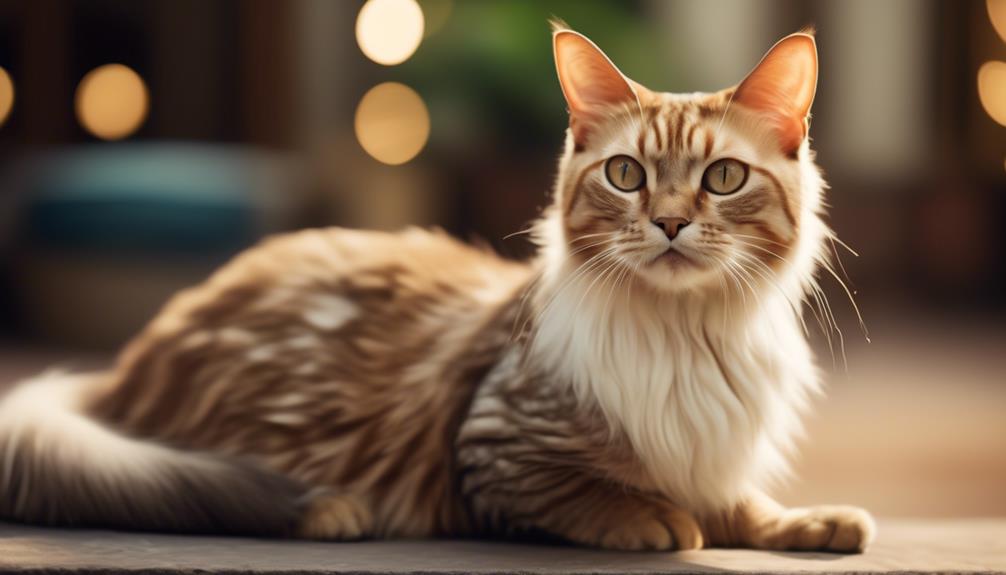
The Javanese cat breed is an extraordinary feline marvel that captivates all who see it.
With its stunning color-pointed markings and silky coat, this breed exudes elegance and charm.
But there is more to the Javanese cat than meets the eye.
In this discussion, we will explore the fascinating origins, unique characteristics, and captivating traits of the Javanese cat breed.
Prepare to be enthralled as we unravel the secrets of this remarkable feline companion.
Key Takeaways
- The Javanese cat breed originated in North America and is a medium-sized breed with a long, silky, color-pointed coat.
- They were developed from Siamese, Colorpoint, and Balinese cats and were initially categorized as a distinct breed before being declared a division of the Balinese breed.
- When adopting a Javanese cat, prioritize rescue organizations or shelters, and if purchasing from a breeder, ensure they have ethical practices and prioritize the health and temperament of their cats.
- Javanese cats have an intelligent, playful, and affectionate temperament, require regular grooming, and may be prone to certain genetic health conditions. They are compatible with families, children, and cat-friendly dogs but require respectful treatment and slow, controlled introductions to other pets.
General Information and Characteristics
The Javanese cat breed, originating from North America, is known for its medium size and long, silky coat in various color-pointed patterns.
These cats typically weigh 5 to 10 pounds and belong to the Oriental breed group.
With a lifespan of 10 to 15 years, Javanese cats have a beautiful coat that comes in colors such as red, seal, chocolate, blue, lilac, and tortoiseshell.
They were developed from Siamese, Colorpoint, and Balinese cats and named after the Java island.
Initially classified as a distinct breed, they were later declared a division of the Balinese breed.
The Cat Fanciers and International Cat Association recognized the Javanese cat breed.
See another cat breed profile.
Jungle Curl Cat Breed
Origin and Size
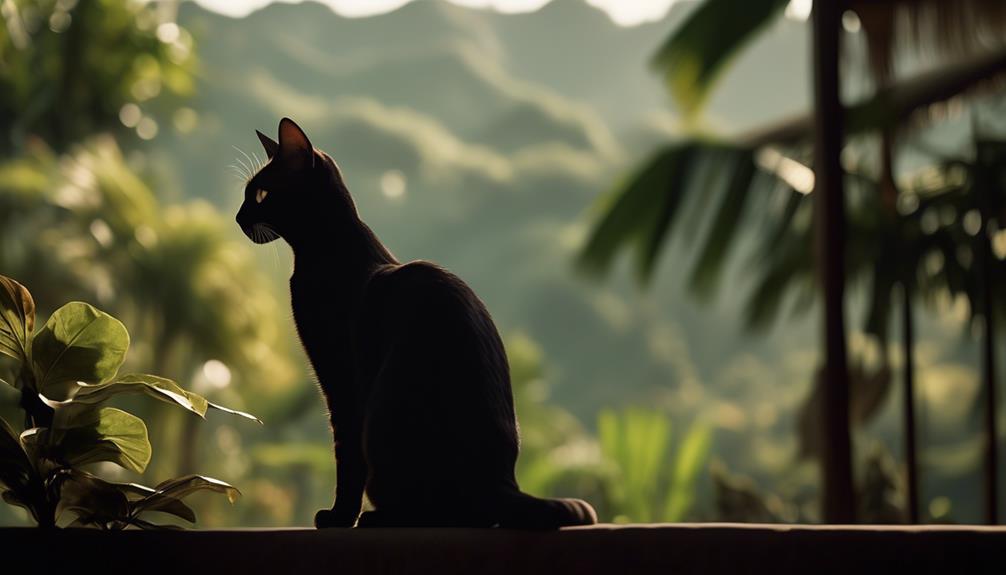
Originating in North America, the Javanese cat breed is known for its medium size and long, silky coat.
These cats typically weigh between 5 to 10 pounds.
They belong to the Oriental breed group and have 10-15 years of lifespan.
The Javanese cats have a color-pointed coat in shades such as red, seal, chocolate, blue, lilac, and tortoiseshell.
They were developed from Siamese, Colorpoint, and Balinese cats and were named after the island of Java.
Initially considered a distinct breed, they were later declared a division of the Balinese breed.
The Cat Fanciers Association and the International Cat Association recognize the Javanese cats and are part of the Siamese grouping of breeds.
Breed Group and Lifespan
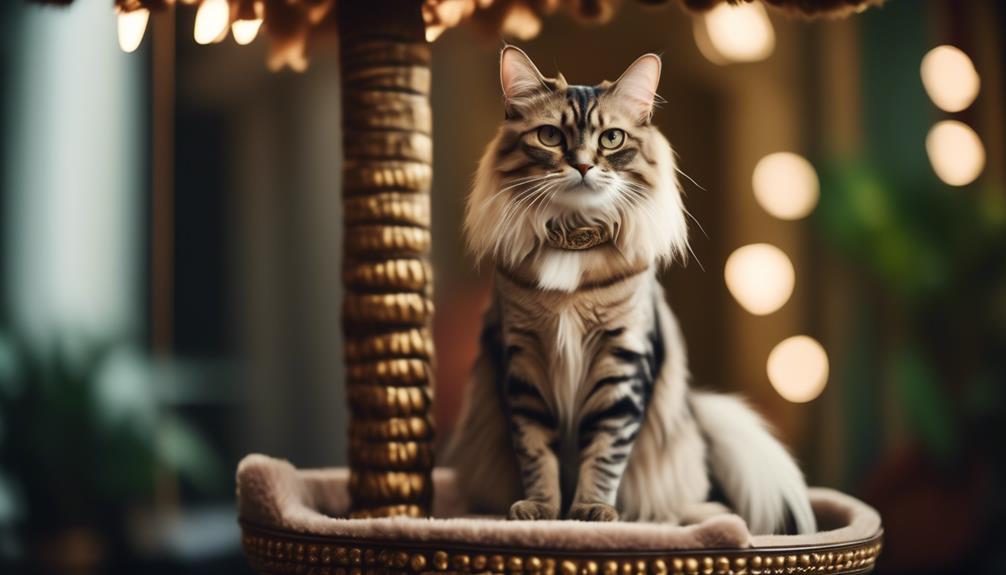
Belonging to the Oriental breed group, the Javanese cats have a lifespan of 10-15 years.
As part of the Oriental breed group, Javanese cats share certain characteristics with other breeds. These cats are medium-sized, typically weighing between 5 to 10 pounds.
They have a long, silky coat in various color-pointed patterns, including red, seal, chocolate, blue, lilac, and tortoiseshell.
Despite their elegant appearance, Javanese cats are known for their playful and affectionate temperament.
They’re intelligent and relatively easy to train. However, it’s important to note that Javanese cats can be prone to certain genetic health conditions, such as feline acromelanism and progressive retinal atrophy (PRA).
Proper care and regular veterinary check-ups can help ensure their well-being throughout their lifespan.
Coat Description and Colors
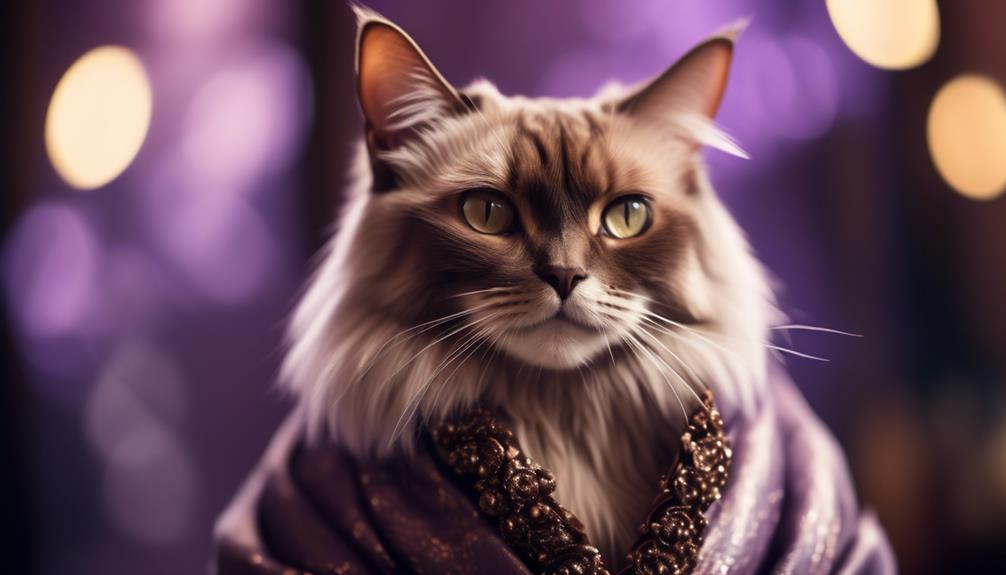
Continuing the exploration of the Javanese cat breed, let’s focus on their distinctive coat description and the variety of colors in which they come.
Coat Description:
- Long and silky
- Fine texture
- Minimal shedding
- Feathers out on the tail
Colors:
- Color-pointed patterns
Wide range of colors, such as:
- Red
- Seal
- Chocolate
- Blue
- Lilac
- Tortoiseshell
The Javanese cat’s coat is known for its luxurious length and silky texture.
With minimal shedding, their fine fur requires regular grooming to maintain its beauty.
The coat feathers out on the tail, adding to the breed’s elegant appearance.
When it comes to colors, Javanese cats come in a variety of striking color-pointed patterns.
From classic shades like red, seal, and chocolate to more unique hues like blue, lilac, and tortoiseshell, there’s a wide range of colors to choose from.
Whether you prefer a traditional or more exotic look, the Javanese cat’s coat offers a stunning array of choices.
History and Recognition
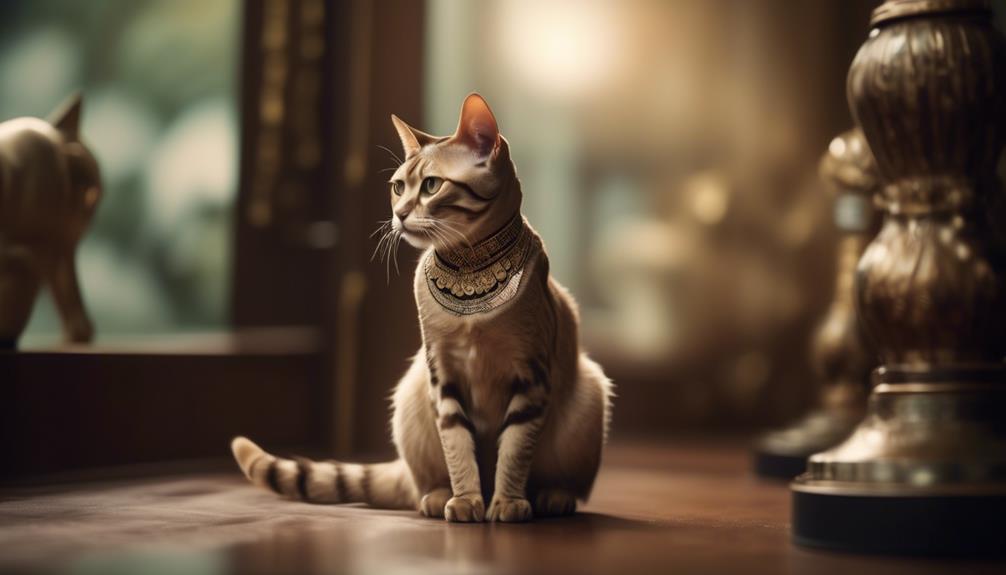
The Javanese cat breed has a rich history and has gained recognition from prominent cat associations.
Developed from Siamese, Colorpoint, and Balinese cats, the breed was named after the island of Java.
Initially categorized as a distinct breed, it was later declared a division of the Balinese breed.
The Javanese breed is recognized by the Cat Fanciers Association and the International Cat Association, and it belongs to the Siamese grouping of breeds.
With their unique coat and striking appearance, Javanese cats have become popular among cat enthusiasts.
Their recognition by reputable cat associations further solidifies their distinct and prized breed status.
Development and Naming
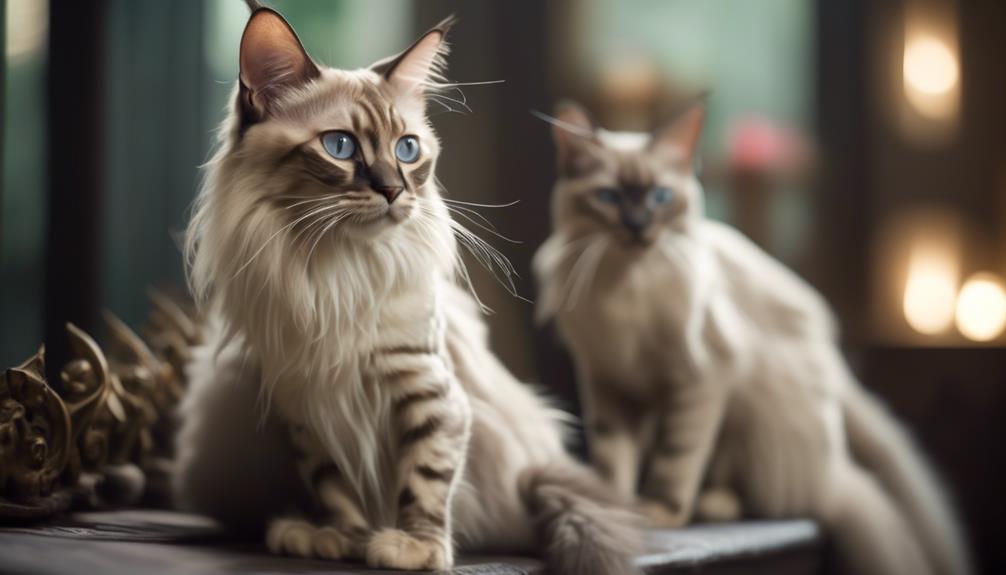
After gaining recognition from reputable cat associations, the Javanese cat breed has an intriguing development history and a unique naming process.
- The breed was developed from Siamese, Colorpoint, and Balinese cats, resulting in its distinctive characteristics.
- The Javanese cat breed was named after the Java island, adding to its exotic allure.
- Initially, the Javanese was categorized as a distinct breed, but it was later declared a division of the Balinese breed.
- The Cat Fanciers Association and the International Cat Association recognized the Javanese cat breed, solidifying its status as a recognized breed.
The Javanese cat breed’s development and naming process showcase the breed’s rich history and origin.
Breed Categorization and Associations
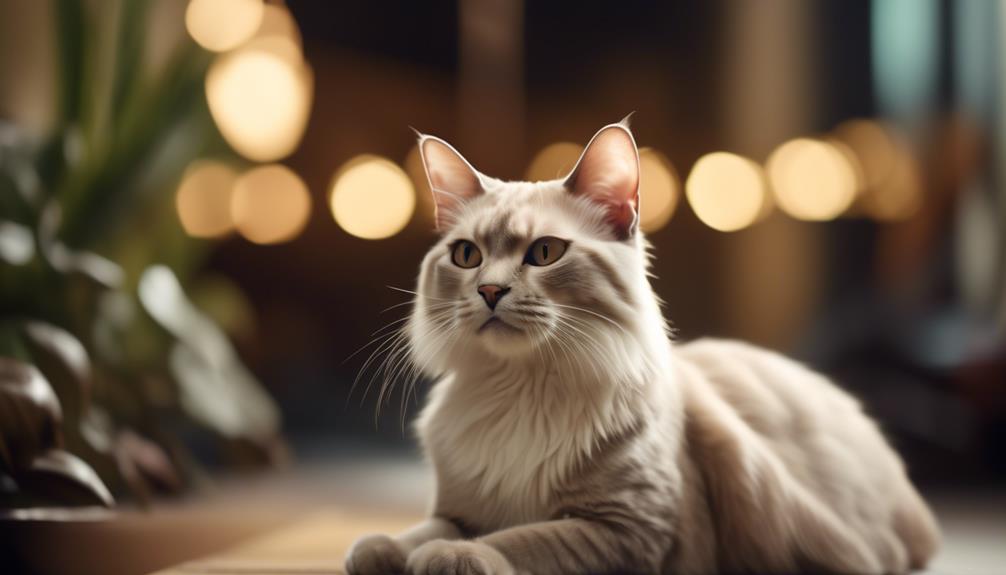
With recognition from reputable cat associations, the Javanese cat breed has been categorized and associated with specific breed groups.
Initially categorized as a distinct breed, it was later declared a division of the Balinese breed.
The Javanese cat breed belongs to the Siamese grouping of breeds.
It has been recognized by the Cat Fanciers Association and the International Cat Association.
This categorization and association with breed groups helps to establish the breed’s identity and characteristics within the larger cat community.
It also allows for easier identification and understanding of the Javanese cat’s traits and temperament.
Being associated with reputable cat associations lends credibility and validity to the breed and ensures that breeders and owners adhere to certain standards and ethical practices.
Adoption and Breeding Guidelines
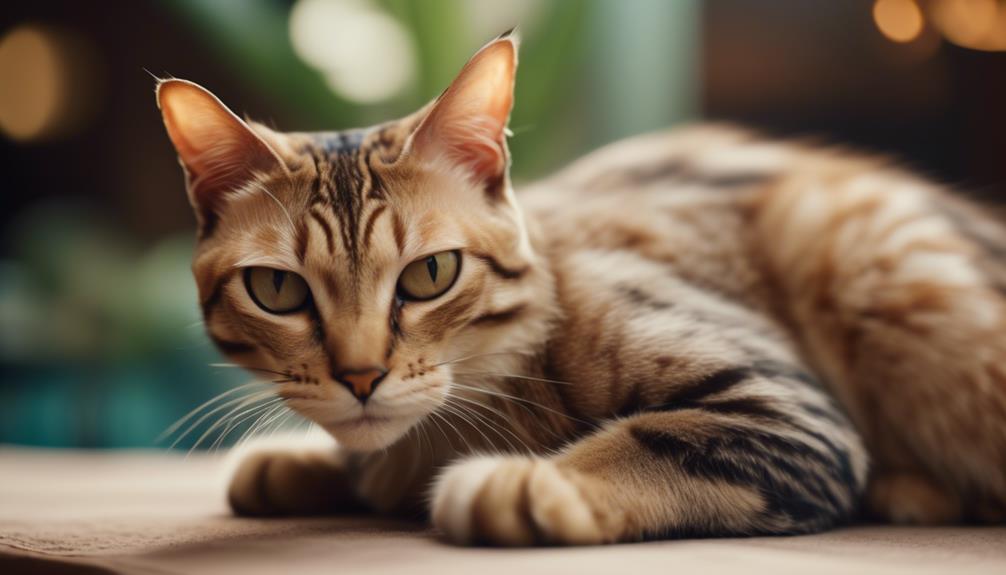
When adopting or purchasing a Javanese cat, it’s important to prioritize ethical practices and consider the health and temperament of the cat.
To ensure a positive experience, here are some guidelines to follow:
- Prioritize adopting from rescue organizations or shelters to provide a loving home to a needy cat.
- If purchasing a Javanese kitten, choose a reputable breeder who prioritizes the health and temperament of their cats.
- Conduct thorough research on breeders’ ethical practices to ensure they follow responsible breeding standards.
- Discourage unethical breeding practices that prioritize profit over the well-being of the cats.
Researching Reputable Breeders

To ensure a positive experience when adopting or purchasing a Javanese cat, thoroughly research and identify reputable breeders who prioritize the health and temperament of their cats.
Start by searching for breeders with a good reputation within the cat breeding community.
Look for transparent breeders about their breeding practices, provide proper healthcare for their cats, and conduct genetic testing to reduce the risk of hereditary health conditions.
It’s also important to visit the breeder’s facility to assess the living conditions and how the cats are cared for.
Additionally, ask for references from previous buyers to get first-hand feedback on the breeder’s integrity and the quality of their cats.
Traits, Personality, and Health
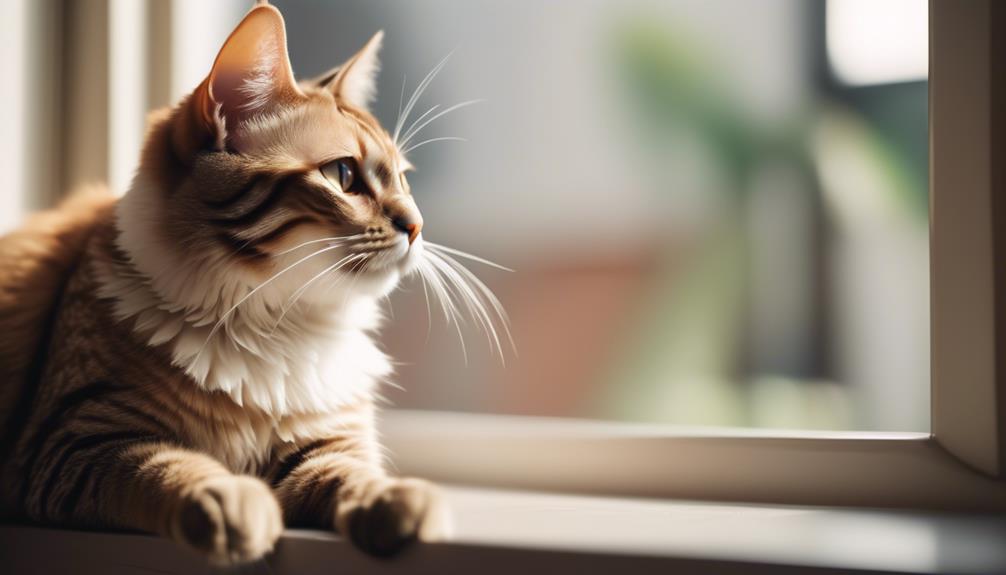
The Javanese cat breed is known for its intelligent, playful, and affectionate temperament.
They’re highly interactive cats that enjoy being involved in their owner’s daily activities.
Here are some key traits, personality characteristics, and health considerations of the Javanese breed:
- Moderate to high exercise needs: Javanese cats are active and require regular playtime and mental stimulation to keep them happy and healthy.
- Relatively easy to train: These cats are intelligent and can quickly learn commands and tricks with positive reinforcement training methods.
- Prone to certain genetic health conditions: Javanese cats may be susceptible to feline acro melanism and progressive retinal atrophy (PRA). It’s important to be aware of these potential health issues and monitor their overall well-being.
- Incidences of other health problems: Javanese cats may also be prone to conditions such as amyloidosis, asthma/bronchial disease, congenital heart defects, crossed eyes, gastrointestinal conditions, hyperesthesia syndrome, lymphoma, nystagmus, and progressive retinal atrophy. Regular veterinary check-ups and a healthy diet can help mitigate these risks.
Temperament and Exercise Needs
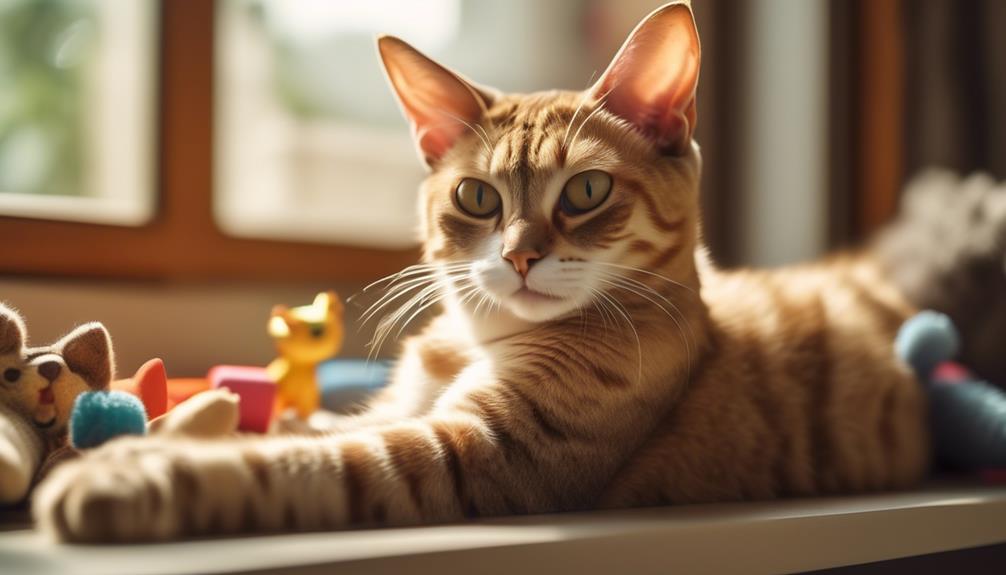
Javanese cats are known for their affectionate and playful temperament, making them delightful companions for owners who enjoy interactive and engaging feline companionship.
These cats have a reputation for being intelligent and enjoy interactive playtime with their owners.
They’re often described as being social and friendly, and they tend to form strong bonds with their human family members.
Javanese cats also have moderate to high exercise needs. They enjoy playing with toys, climbing, and exploring their environment.
Regular play sessions with their owners can help keep these cats mentally and physically stimulated.
Providing them with scratching posts and interactive toys can also help satisfy their exercise needs and prevent them from becoming bored or restless.
Training and Genetic Health Conditions
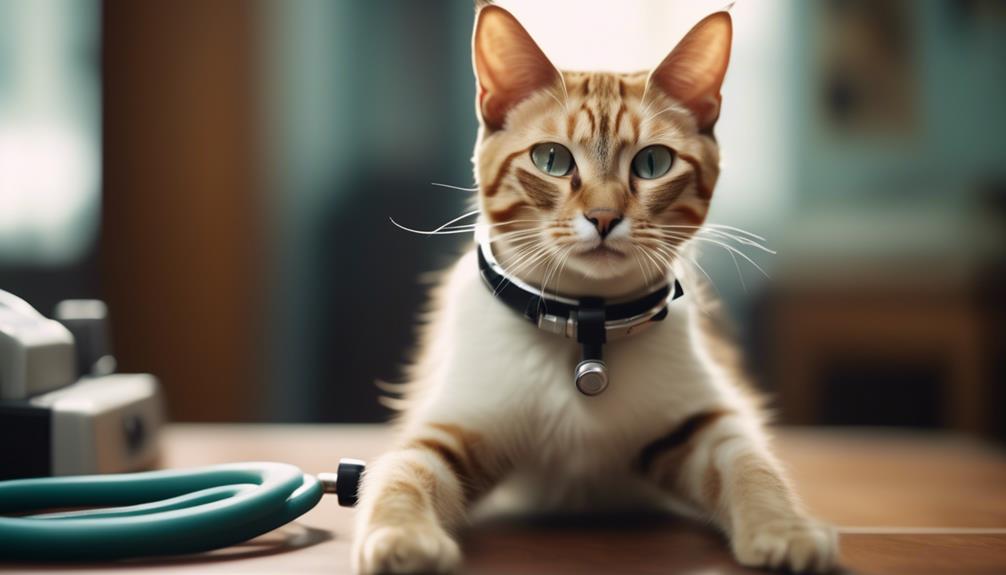
With their intelligence and playful nature, Javanese cats can be easily trained while also prone to certain genetic health conditions.
Here are some important points to consider regarding their training and genetic health:
- Positive reinforcement techniques work best for training Javanese cats, as they respond well to praise and rewards.
- Start training early to establish good behavior habits and prevent potential behavior issues.
- Javanese cats can be trained to walk on a leash, perform tricks, and even play fetch.
However, it’s important to know their genetic health conditions, such as feline acromelanism and progressive retinal atrophy (PRA).
Regular vet check-ups and genetic testing can help identify and manage these health conditions.
Care, Grooming, and Compatibility
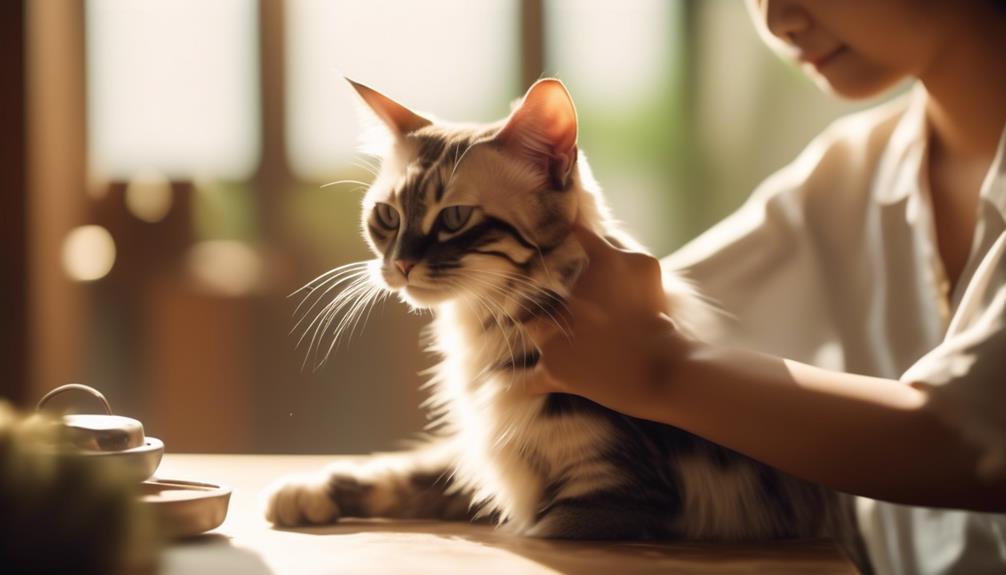
Regular grooming and proper care are essential for the well-being and overall health of Javanese cats.
With their fine, silky coat, Javanese cats are easily cared for.
Regular combing is necessary to remove dead hair and prevent matting.
In addition to grooming, dental hygiene is crucial to prevent periodontal disease.
Regular cleaning of the eyes and ears is also necessary to maintain hygiene.
Javanese cats should live indoors only to ensure their safety.
They share a similar appearance to Siamese cats, with a svelte body, long lines, wedge-shaped head, large, wide-based, pointed ears, medium-size almond-shaped eyes, medium-length coat (longest on the tail), and vivid blue eyes.
Javanese cats are suitable for families with children and cat-friendly dogs.
They can learn tricks easily and require polite and respectful treatment from children.
They can live peacefully with cats and dogs who respect their authority, but it’s important to introduce new pets slowly and in controlled circumstances for a harmonious environment.
Frequently Asked Questions
Are Javanese Cats Hypoallergenic?
No, Javanese cats are not hypoallergenic.
They have a long, silky coat that can produce dander, triggering allergies in sensitive individuals.
Regular grooming and cleaning practices can help minimize allergic reactions.
Do Javanese Cats Require Any Special Dietary Needs?
Javanese cats do not require any special dietary needs.
They can be fed balanced and nutritious cat food, ensuring they receive all the necessary nutrients for their health and well-being.
How Often Should Javanese Cats Be Groomed?
Javanese cats should be groomed regularly to maintain their fine, silky coat.
This involves combing to remove dead hair and cleaning their eyes and ears. Dental hygiene is also important to prevent periodontal disease.
Are Javanese Cats Prone to Any Specific Behavioral Issues?
Javanese cats are not prone to specific behavioral issues.
However, like any cat, individual temperament may vary.
It’s important to provide them with mental and physical stimulation, proper socialization, and a loving environment to prevent potential behavioral problems.
Can Javanese Cats Live Comfortably in Small Living Spaces?
Javanese cats can live comfortably in small spaces with enough mental and physical stimulation.
They are adaptable and can thrive in apartments or houses with limited space.
Conclusion
In conclusion, the Javanese cat is a beautiful breed known for its silky coat, distinct color-pointed markings, and affectionate nature.
With a 10-15 year lifespan, these cats make great companions for families with children and cat-friendly dogs.
While they require moderate to high levels of exercise and may be prone to certain genetic health conditions, with proper care, grooming, and compatibility considerations, Javanese cats can bring joy and love to their owners for many years.




